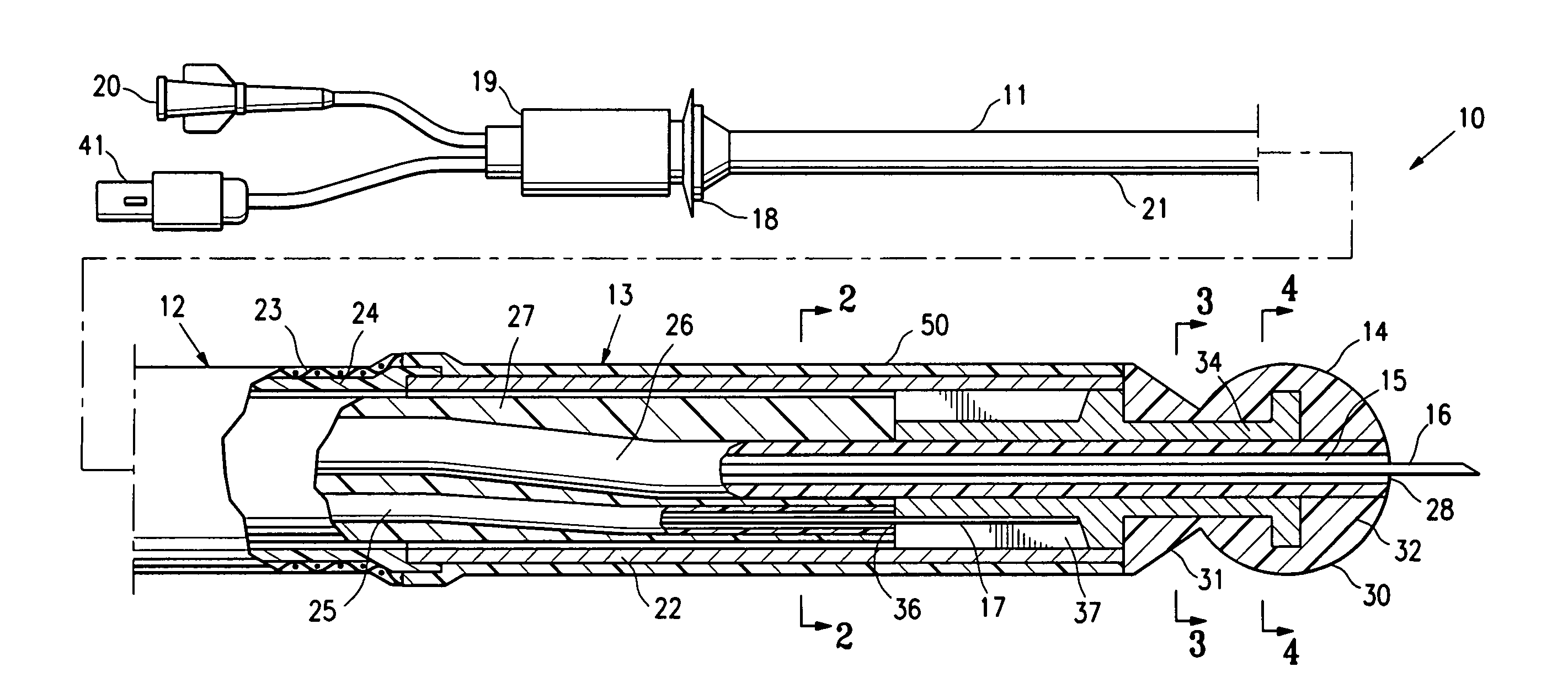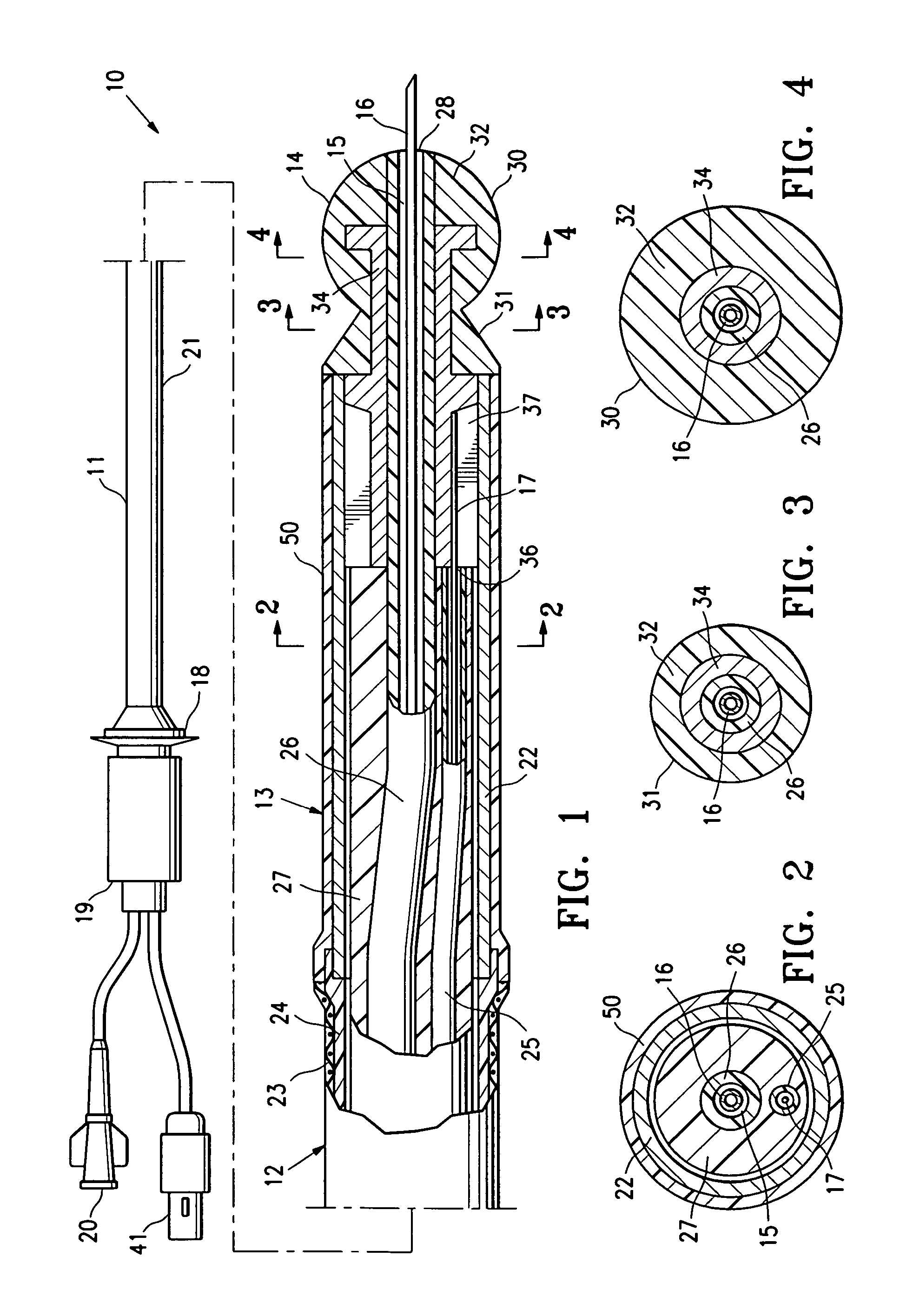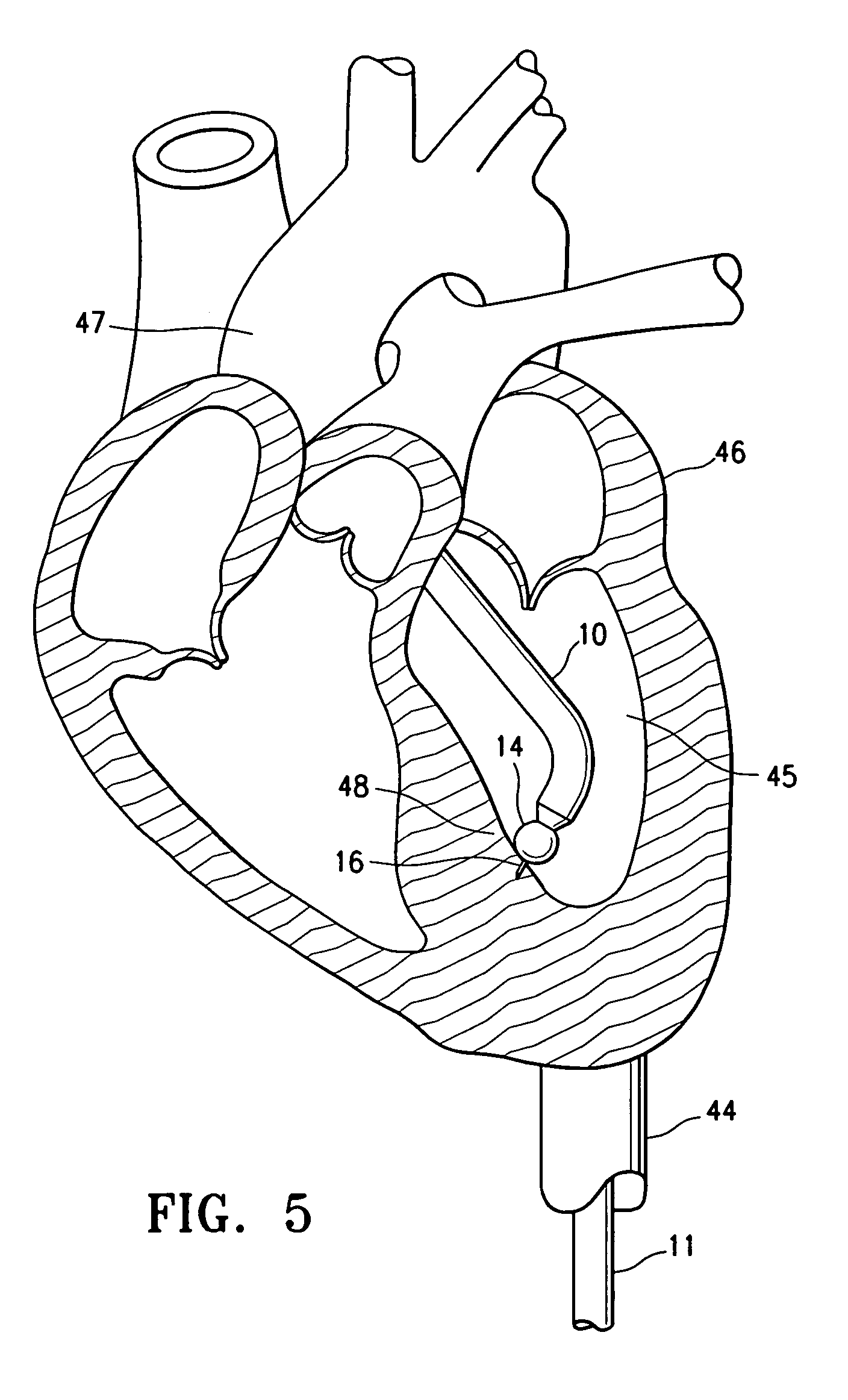Echogenic needle catheter configured to produce an improved ultrasound image
a technology of ultrasound image and needle catheter, which is applied in the field of medical devices, can solve the problems of affecting the performance characteristics, strength, flexibility and softness of the distal tip, and metal additives can impair the ability to ultrasonically image the distal tip, so as to reduce the amount of metal in the tip, reduce or eliminate the effect of pyramid artifacts
- Summary
- Abstract
- Description
- Claims
- Application Information
AI Technical Summary
Benefits of technology
Problems solved by technology
Method used
Image
Examples
Embodiment Construction
[0020]FIG. 1 illustrates a needle catheter 10 which embodies features of the invention. In the embodiment illustrated in FIG. 1, the needle catheter 10 generally comprises an elongated shaft 11 having a proximal shaft section 12, a distal shaft section 13, and a needle containing lumen 15, and a distal tip 14 at the distal end of the shaft 11. A needle 16 is slidably disposed within the lumen 15 of the shaft, with an extended configuration in which the needle distal end extends distally from the distal end of the catheter (see FIG. 1), and with a retracted configuration (not shown) in which the needle distal end is proximally retracted into the catheter lumen 15. In the illustrated embodiment, the catheter 10 has an elongated deflection member 17 (e.g., a tendon wire) connected to a deflection control mechanism 18 at a proximal adapter 19, for deflecting the distal end of the catheter 10. To effectively deflect the distal end of the catheter the deflection member 17 is preferably ne...
PUM
| Property | Measurement | Unit |
|---|---|---|
| circumference angle | aaaaa | aaaaa |
| conductivity | aaaaa | aaaaa |
| conductivity | aaaaa | aaaaa |
Abstract
Description
Claims
Application Information
 Login to View More
Login to View More - R&D
- Intellectual Property
- Life Sciences
- Materials
- Tech Scout
- Unparalleled Data Quality
- Higher Quality Content
- 60% Fewer Hallucinations
Browse by: Latest US Patents, China's latest patents, Technical Efficacy Thesaurus, Application Domain, Technology Topic, Popular Technical Reports.
© 2025 PatSnap. All rights reserved.Legal|Privacy policy|Modern Slavery Act Transparency Statement|Sitemap|About US| Contact US: help@patsnap.com



